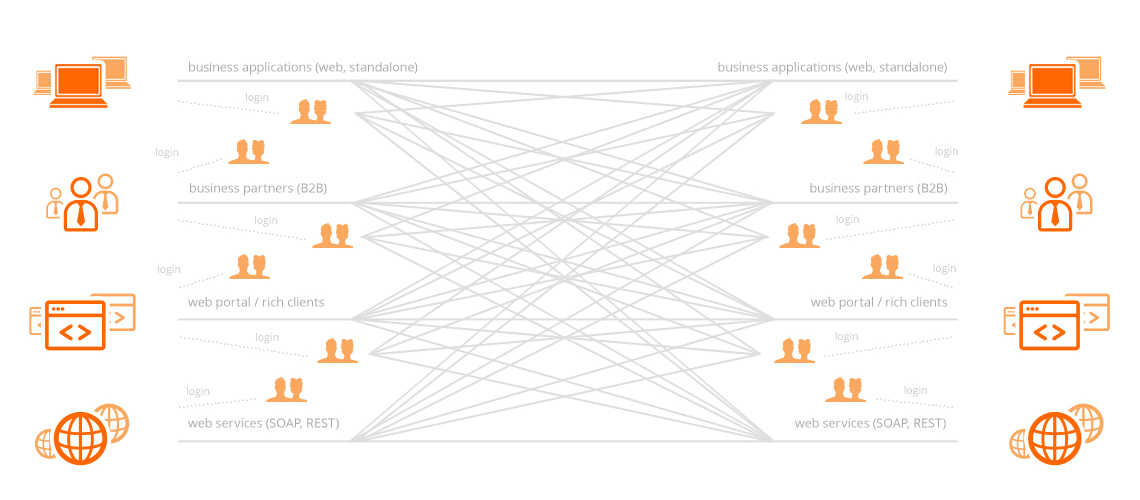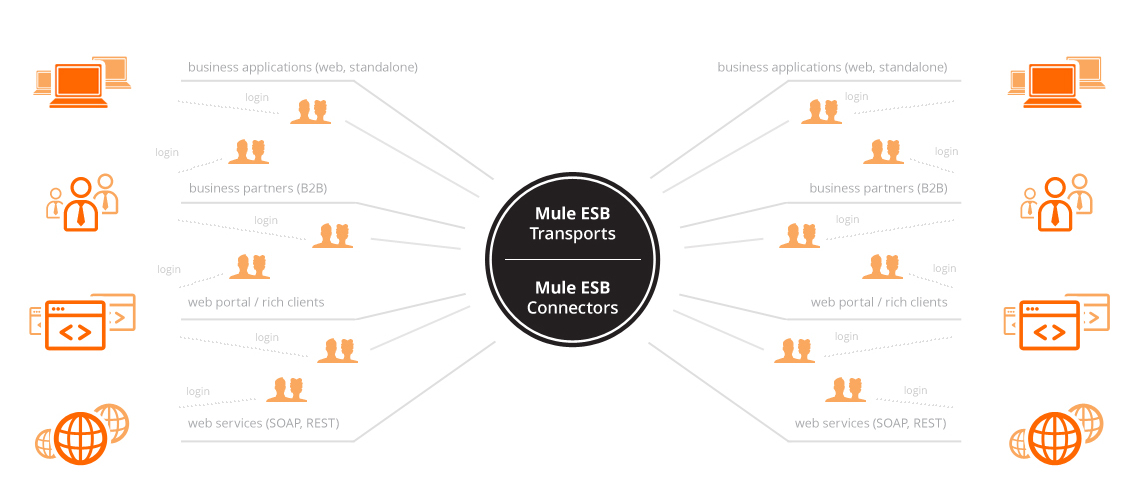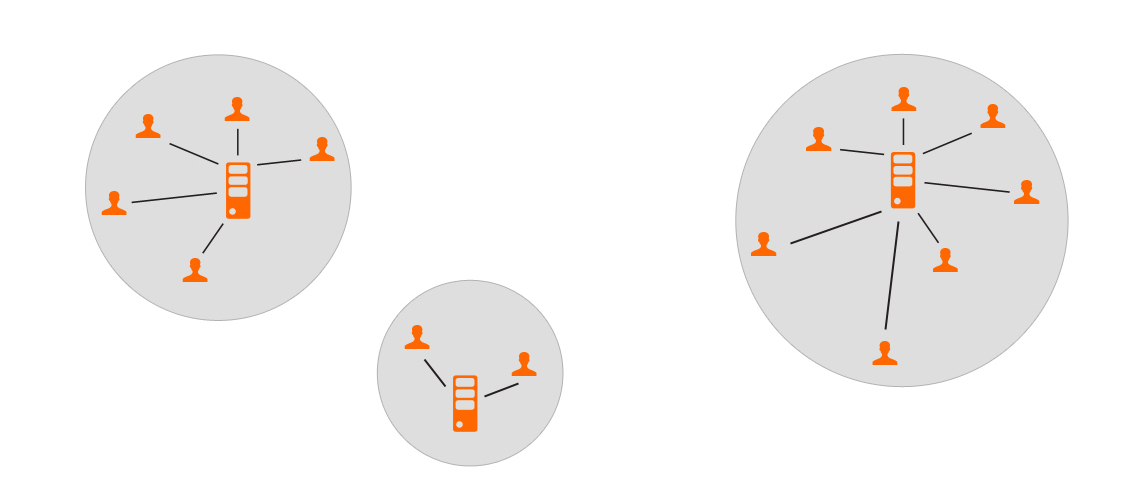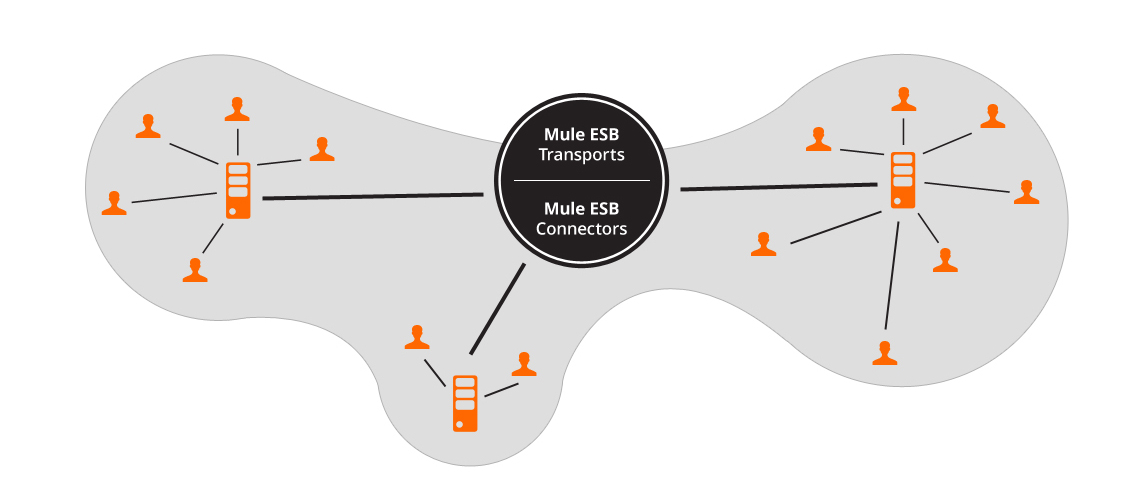Integration platform Mule ESB
What is Enterprise Service Bus
An Enterprise Service Bus (ESB) is fundamentally a software architecture. It is a set of rules and principles for integrating numerous applications together using a bus-like infrastructure. The core concept of the ESB architecture is that you integrate different applications by placing a communication bus between them and then enabling each application to talk to the bus. This decouples systems from one another, allowing them to communicate without depending on or having knowledge of other systems on the bus.
What is Mule ESB
Mule is an open-source lightweight ESB and an integration platform based on Java. It allows smooth, easy and fast interconnection between different applications, which enables seamless data exchange. The Mule platform can be used for integration of already built systems regardless of the used technology, including JMS, web services, JDBC, http and many others.
Mule ESB™ can connect systems such as Salesforce with ERP and financial applications like SAP, NetSuite and Oracle EBS or even Microsoft based systems and applications. Salesforce online connection and integration with ERP allows a complete view of your customers and automation of business processes across applications.
The main advantage of ESB is that it allows different applications to communicate with one another without unnecessarily complex communication channels across the applications, because it serves as a transition system for data exchange inside a corporate network or over the Internet.
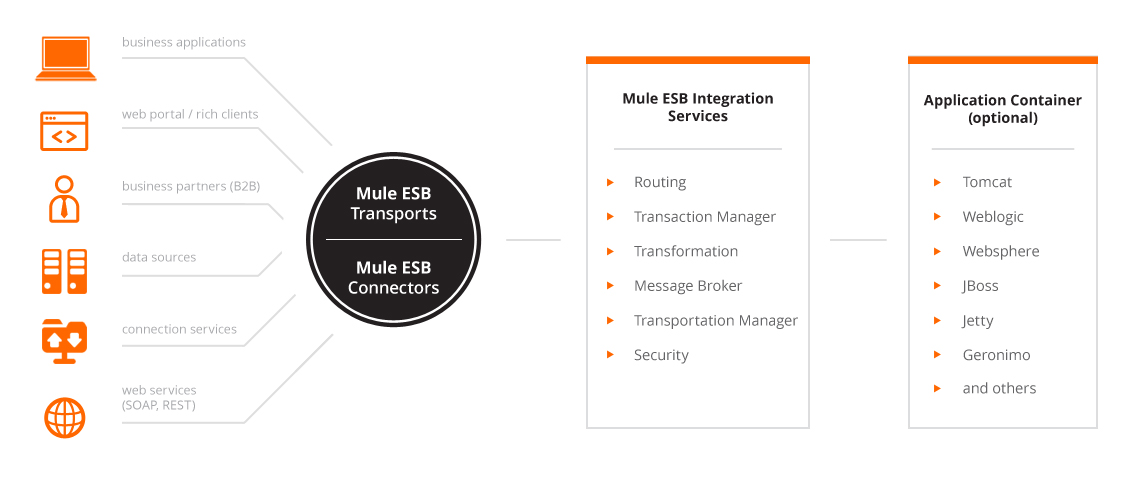
I need ESB
Mule, as well as other ESB, offers you added value in situations where you need several systems integrated easily. It is also suitable for situations, where you need to preserve loose coupling between components, high scalability and robustness of a given system.
Below is a list of key drivers for choosing ESB:
- Do you plan to integrate more than two systems?
- Do you expect to connect more application together in the near future?
- Do you need to use multiple communication protocols?
- Do you need message routing, e.g. aggregations, splitting, routing based on the message content?
- Do you need to publish services to be consumed by other systems?
- Do you need your services to communicate with ones that they currently can’t?
Why Mule ESB
Mule ESB is lightweight, but highly configurable and scalable. It's possible to start with a few applications and add as many as necessary later on. The Mule platform transparently handles all interactions between applications and components, no matter whether they exist in the same JVM or somewhere on the Internet and regardless of the transport protocol.
These days there are a couple of commercial ESB implementations on the market, but many of them only have limited functionality or are built on the top of existing application servers, which can entail several consequences. The most common is the so-called vendor lock-in, where it's not easy to change the underlying server. But Mule is different, it's vendor agnostic, so you don't need to worry about being locked in.
Mule platform offers many advantages over its competitors:
- Mule components - components in Mule can be of any type you want. You can simply integrate everything from „plain old Java objects“ (POJO) to components from a different framework.
- Reusability of components - re-use of components in Mule is really easy. Unlike other ESBs Mule allows you to re-use existing components without changing them. Components do not require any Mule specific code to let them run in Mule server. This is possible because of strict separation between business logic and the message transport layer.
- Message format - the message formats can vary from SOAP up to binary data (e.g. images, modern data formats like Protocol Buffers, Avro and many more). Mule does not force you to use XML messages or WSDL contracts. Although you can use them if you wish.
- Topology - Mule deployment may vary regarding your production scenario, you do not need to stick with the ESB topology. Because it's lightweight and embeddable in many application servers, Mule can significantly decrease time to market and increase the productivity on projects delivering secure, reliable and scalable applications.
- Scalability - Mule is based on an event-driven architecture (SEDA) and that makes it highly scalable. For example, a major airline company uses Mule to processes over 10,000 transactions per second.
Mule ESB Enterprise
There are two editions of Mule ESB: Community and Enterprise. Mule ESB Enterprise has additional features, which are ideal for production deployments, where high availability, monitoring and technical support are needed. Both editions are based on the same code base, thus it's easy to upgrade from the Community to the Enterprise version.
At Mulesoft's web pages you can compare the Community and Enterprise versions.
Our solution
We offer a complete, full stack solution of systems and services integration. From analysis of your needs, to architecture (software as well as hardware), up to the final deployment. You can choose between the Community and Enterprise versions, depending on your system requirements (e.g. high availability, support etc.). The complete solution can be hosted on our servers or it can run on your premises. We can also provide you with powerful and reliable hardware.
The systems integrated with Mule ESB can be extended to integrate users and roles via Keycloak SSO or data collection, analysis and machine learning using Data Grids and Big Data. Mule ESB assures that you have the option to expand your services at any moment! We and our international partners are always ready to upgrade your solution to the Enterprise version, give you the lowest prices on Enterprise licenses and provide you with the next level of integration, i.e. Anypoint Platform.
Some of our projects and stats
- Mule deployments - several Mule production deployments with our custom Java solutions for different business areas of our clients.
- SMS broker - sms delivery broker leveraging various network operator's APIs.
- B2B Integration - electronic invoice delivery across several systems.
- Generic delivery platform - ESB capable of delivering huge amount of messages to/from various systems.
There are not many companies that are able to professionally solve complex tasks and do their work well. I am therefore very pleased to be working with Integsoft who understand Java and Mule ESB really well.
Mule ESB Enterprise is by far the fastest integration solution to implement. We can now deploy projects at a much faster rate, ultimately making my company more profitable.

